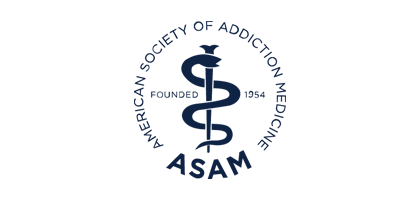Blog
Ask the PCSS Expert: Is Sublingual Buprenorphine Safe to Use While Breastfeeding?
A physician wrote into the mentor network asking about effects of sublingual buprenorphine-containing medications while breastfeeding.
The physician’s patient asked to be placed on buprenorphine monoproduct while breastfeeding, but the physician thought no appreciable naloxone made it into breast milk. After the physician renewed the buprenorphine/naloxone prescription, the patient returned complaining that her baby had a rash which the pediatrician described as a “systematic topical eruption” caused by buprenorphine/naloxone. The patient’s physician had not seen the baby, and was unable to contact the pediatrician about what component of buprenorphine/naloxone could have caused the rash.
The physician wants to know:
Should the patient have been on buprenorphine monoproduct, not combined with naloxone, while breastfeeding for a preset period of time?
What is the likelihood that if this rash was a drug eruption, that it was from Naloxone or buprenorphine?
One important step in clarifying this situation includes obtaining consent from the patient to speak to the pediatrician for a direct conversation about the type of rash and potential causes, including naloxone or buprenorphine.
Studies have shown that the amounts of buprenorphine in the breast milk of lactating women are quite low, often times not sufficient to prevent neonatal opioid withdrawal.1-6 Low levels of buprenorphine and its metabolite, nor-buprenorphine, were found in infants’ urine in a study of babies and their lactating mothers taking the medication. The abstract states:
“These data support the use of buprenorphine during breastfeeding. However, the authors recommend that infants be monitored closely.”7
Another study testing buprenorphine and nor-buprenorphine concentrations in breast milk samples of lactating women taking buprenorphine as maintenance therapy concluded that “Drug exposure of the infant may be considered to be low.”8
Not only does the evidence suggest that buprenorphine is safe to use during pregnancy, but buprenorphine is not known to cause drug eruptions in breastfed infants. Therefore, it is unlikely that the baby’s rash was caused by buprenorphine.
While buprenorphine levels transfer to breastmilk in very low levels, naloxone is even much less detectable, if at all. It is unlikely that naloxone was the cause of the rash.
If the rash was not caused by buprenorphine nor naloxone, it is possible that it was not a “drug eruption,” and it would be important to determine whether the mother or infant had any other ingestions, such as food, that could have caused a reaction.
For more information about the Providers’ Clinical Support System for Medication Assisted Treatment (PCSS-MAT) visit www.pcssmat.org.
- To sign up for a mentor CLICK HERE!
- Have a Question for PCSS-MAT Experts? CLICK HERE!
References
1) Buprenorphine use while Breastfeeding. http://www.drugs.com/breastfeeding/buprenorphine.html
2) Marquet P, Chevrel J, Lavignasse P et al. Buprenorphine withdrawal syndrome in a newborn. Clin Pharmacol Ther. 1997;62:569-71. PMID: 9390114
3) Johnson RE, Jones HE, Jasinski DR et al. Buprenorphine treatment of pregnant opioid--dependent women: maternal and neonatal outcomes. Drug Alcohol Depend. 2001;63:97-103. PMID: 11297835
4) Schindler SD, Eder H, Ortner R et al. Neonatal outcome following buprenorphine maintenance during conception and throughout pregnancy. Addiction. 2003;98:103-10. PMID: 12492761
5) Kayemba-Kay's S, Laclyde JP. Buprenorphine withdrawal syndrome in newborns: a report of 13 cases. Addiction. 2003;98:1599-604. PMID: 14616186
6) Johnson RE, Jones HE, Fischer G. Use of buprenorphine in pregnancy: patient management and effects on the neonate. Drug Alcohol Depend. 2003;70 (2 Suppl):S87-S101. PMID: 12738353
7) Transfer of buprenorphine into breast milk and calculation of infant drug dose. http://www.ncbi.nlm.nih.gov/pubmed/19136395#
8) Buprenorphine and nor buprenorphine concentrations in human breast milk samples determined by liquid chromatography-tandem mass spectrometry. http://www.ncbi.nlm.nih.gov/pubmed/16044112#
Providers’ Clinical Support System is a national training and mentoring project funded by the Substance and Mental Health Services Administration led by American Academy of Addiction Psychiatry in partnership with: American Osteopathic Academy of Addiction Medicine, American Psychiatric Association and ASAM. ASAM Magazine is republishing selected questions received by the PCSS mentors. Please note the Mentoring Program and Listserv discussion group and ASAM Magazine are NOT intended to provide clinical consults for specific patient questions and is offered only as a resource for education and overall guidance.
Funding for this initiative was made possible (in part) by Providers’ Clinical Support System for Medication Assisted Treatment (1U79TI024697) from SAMHSA. The views expressed in written conference materials or publications and by speakers and moderators do not necessarily reflect the official policies of the Department of Health and Human Services; nor does mention of trade names, commercial practices, or organizations imply endorsement by the U.S. Government.

